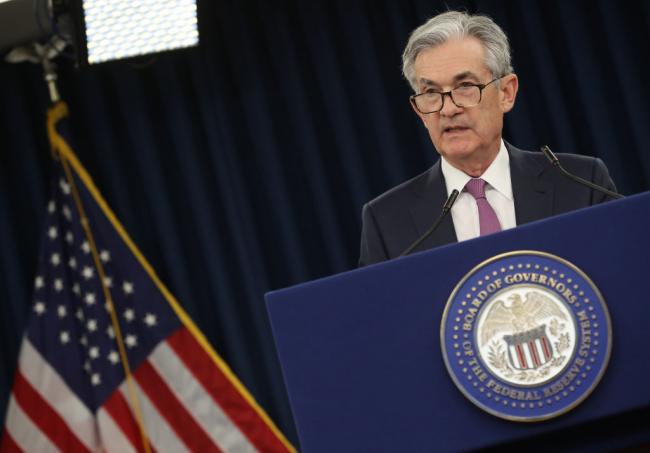(Bloomberg Opinion) -- This was supposed to be a no-drama, non-event Federal Reserve policy meeting --- and was, until a small communication slip led to outsize moves in markets, with stocks and bonds selling off simultaneously. Understanding why tells us a lot about investor mentality and market positioning, not to mention the need for the Federal Reserve to develop a better feel for both before things get really complicated.
The minute-by-minute moves in markets on Wednesday afternoon mirrored those seen in December after the conclusion of that FOMC meeting. Investors and traders initially welcomed a slightly dovish change in the Fed’s language on inflation. The calm held during Chairman Jerome Powell’s opening statement at the press conference.
Then, just as in December when Powell used the word “ autopilot” to describe the then-prevailing policy approach to reducing the Fed’s balance sheet, his use of the word “transitory” when responding to a question on low inflation shook markets. Stocks started to sell off, with the S&P 500 Index ending the day 0.75 percent lower. Bonds prices also fell, reversing the earlier narrowing in yields, and the dollar rose.
The moves were important beyond their relatively modest size. Following the dramatic, dovish U-turn in monetary policy signals earlier this year, markets are now positioned not just for a patient Fed but one that will cut rates later in 2019 -- based less on a significant growth slowdown than the persistence of low inflation. This notion has been solidified in the market’s forecast of an “insurance cut” by the Fed, one meant to lower the risk of price deflation, boost growth and provide liquidity support for asset prices.
By indicating that “transitory,” rather than persistent, factors explained the recent fall in inflation, Powell cast doubt on this conviction. And with market positioning quite extended after an impressive 18 percent gain in the S&P 500 in the last four months -- the strongest start to the year since 1987 -- even a single inadvertent word can impact asset prices.
Perhaps the Fed, fearing an asset bubble and financial instability down the road, was looking to take some steam out of red-hot stock markets, as well encourage an adjustment to very low bond yields and a still quite flat yield curve. Personally, I doubt it. After all the excitement of the last few months and political attacks on its independence, I’m betting the Fed was hoping to make no waves with its meeting and statements.
The fact that it ended up moving markets suggests that the Fed needs to develop a better understanding of market technicals -- or what some call a “feel” for the markets. Without that, an important part of its policy arsenal -- that is, policy guidance which ensures that markets do some, if not all of the heavy lifting -- will become less effective.
This need has only become more urgent. The Fed opted last year for a press conference at the conclusion of every FOMC meeting, thereby increasing the scope for communications mishaps and undue market volatility. The communication challenge will become even more complicated if you believe, as I do, that growth will continue to diverge among the advanced countries as the U.S. out-performs and Europe struggles.
It’s highly likely now that Fed officials, as they did after their December meeting, will make remarks in the next few weeks to clarify their intended policy signals and soothe market jumpiness. Each such episode only confirms the markets’ belief that a “Powell Put” will continue to prop up elevated asset prices and growing debt and leverage (just as they believed in a “Bernanke Put” and a “Yellen Put”).
With two slots open on the Board of the Federal Reserve and only one possible nominee in play (Stephen Moore), the administration still has a chance to add market expertise to the Fed board, someone who can fill the role ably played by prior governors Kevin Warsh and Jeremy Stein. To do so, the White House needs to focus on finding someone very familiar with the operation of markets, or at least someone open to listening to market participants -- thereby supplementing the economists and generalists currently on the board.
While investors will likely put Wednesday’s tantrum behind them relatively quickly, the lesson holds. Absent a better understanding of market positioning and ruling narratives, the Fed risks undue volatility that could be costly to economic well-being, especially if the policy outlook does indeed get trickier later this year.
